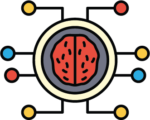HR Knowledge Base – Theory, Concepts, KPI, Drafts, Articles, Videos
Understanding Business Strategy
What does Business Acumen means?
According to SHRM Business Acumen is the ability to understand and apply information with which to contribute to the organization’s strategic plan
Being Business Acumen allows you to make great business decisions by combining a number of factors to arrive at the best results.

Why develop your Business Acumen competency?
The Business Acumen competency allows you to increase efficiency in your job by being able to solve challenging work related problems.
Going further with this rationale, being able to solve challenging problems will lead to success in your career.
Here are some easy to use and effective tools for understanding your business:
The PESTLE Analysis is a very good way to scan the business external environment. This type of analysis takes into consideration six external factors which can influence the business.
SWOT Analysis needs no introduction. This is a very well known tool which, from our perspective is underutilised.
In a SWOT Analysis you assess four important aspects which can influence your objective: Strengths, Weaknesses, Opportunities and Threats.
The Business Model Canvas is a tool which describes in a very straightforward way your business model. It analyses nine important areas of your business:
Key Partners
Who are our Key Partners / Suppliers? What key resources are acquiring from our key partners? What key activities do our key partners?
Key Activities
What key activities are required by our: Values Propositions, Distribution Channels, Customer Relationships, Revenue Streams
Value Propositions
What value do we deliver to our customers?
What problems do we solve & to what segments?
Customer Relationship
What type of relationship is expected by each customer segment?
What relationships did we establish?
How costly are these relationships?
Channels
Through what channels do our customers want to be reached? How are we reaching them? Which channels work best? Which are most cost-efficient?
Key Resources
What key resources are required by our: Values Propositions, Distribution Channels, Customer Relationships, Revenue Streams?
Customer Segments
For whom are we creating value?
Who are our most important customers?
Cost Structure
What are the most important costs of our business model?
What Key Resources/Activities are most expensive?
Revenue Streams
What values are our customers willing to pay? What do they currently pay?
How much does each revenue stream contribute to overall turnover?
Assumptions
Each company operates based on a set of assumptions. An assumption can be defined as an idea presumed to be true when making a decision. As an HR professional you should know which are the assumptions your company operates on.
Usually, companies make assumptions in different areas like: Financials, Resources, Profitability, Competition, Political & Regulatory, Economical and Management Expertise.
Assumptions need to be challenged. For example, the HR team can challenge and address the Management Expertise assumption by questioning: Does our leadership team have the capabilities to deliver the strategy today and tomorrow?
Constraints
Similar to the assumptions companies operate within limited boundaries. These boundaries are named constraints.
A company can have multiple constraints in different areas. The most common constraints are those related to Financial Resources. Although, usually companies have constraints also in areas like: Time, Assets, Resources & Skills, Knowledge, Regulatory, Management and Staffing.
Know the constraints, adapt and contribute accordingly to the completion of the strategy. Design projects to meet business requirements within known business constraints.

Industry benchmarks
HR Professionals need to understand the statistics on which business leaders base their decisions. This way HR can understand the challenges faced by employees within their organization.
When it comes to reports that can be used by the HR team we can name a wide range:
Macro-economic events
Industry specific trends
Country demographics
Tax, Legal, Compliance
Technology & Automation trends
Consumer marketing reports
Employer branding insights
Compensation and Benefit benchmarks
Engagement and culture insigths
Recruitment and selection trends
Leadership, skills and competency
Future of work forecast

